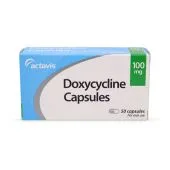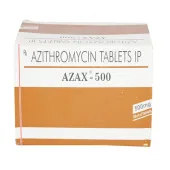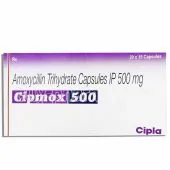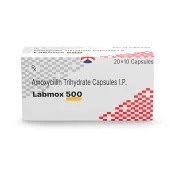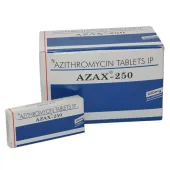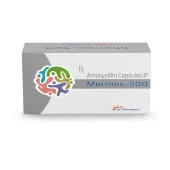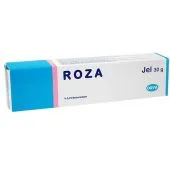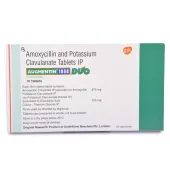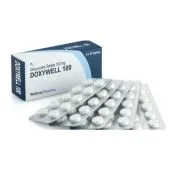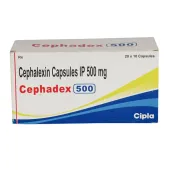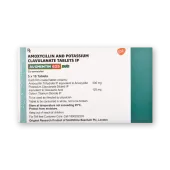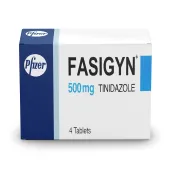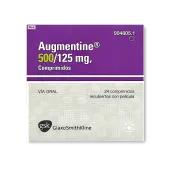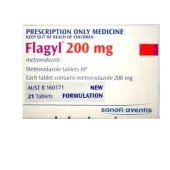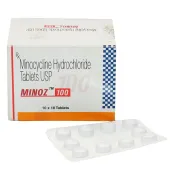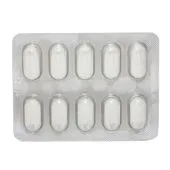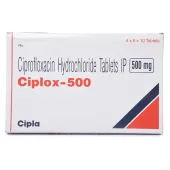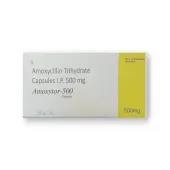Antibiotics

Antibiotic
Antibiotics are among the most frequently prescribed medications in modern medicine. Antibiotics cure disease by killing or injuring bacteria. Today, over 100 different antibiotics are available to cure minor,Read more...
Antibiotic
Antibiotics are among the most frequently prescribed medications in modern medicine. Antibiotics cure disease by killing or injuring bacteria. Today, over 100 different antibiotics are available to cure minor, and life-threatening infections. Although antibiotics are useful in a wide variety of infections, please note that antibiotics only treat bacterial infections. Antibiotics are useless against viral infections (as common cold) and fungal infections (such as ringworm). Some are highly specialised and are only effective against certain bacteria. Others, known as broad-spectrum antibiotics, attack a wide range of bacteria, including ones that are beneficial to us. There are two main ways in which antibiotics target bacteria. They either prevent the reproduction of bacteria, or they kill the bacteria, for example by stopping the mechanism responsible for building their cell walls.
Types Of Bacterial Infections
Bacterial Skin Infections
Bacterial skin infections are usually caused by gram-positive strains of Staphylococcus and Streptococcus or other organisms. Common bacterial skin infections include:
-
Cellulitis causes a painful, red infection that is usually warm to the touch. Cellulitis occurs most often on the legs, but it can appear anywhere on the body.
-
Folliculitis is an infection of the hair follicles that causes red, swollen bumps that look like pimples. Improperly treated pools or hot tubs can harbor bacteria that cause folliculitis.
-
Impetigo causes oozing sores, usually in preschool-aged children. The bullous form of impetigo causes large blisters while the non-bullous form has a yellow, crusted appearance.
-
Boils are deep skin infections that start in hair follicles. Boils are firm, red, tender bumps that progress until pus accumulates underneath the skin.
Bacterial skin infections are treated with oral or topical antibiotics depending on the strain causing the infection.
Foodborne Bacterial Infections
Bacterial infections are one cause of foodborne illness. Nausea, vomiting, diarrhea, fever, chills, and abdominal pain are common symptoms of food poisoning. Raw meat, fish, eggs, poultry, and unpasteurized dairy may harbor harmful bacteria that can cause illness. Unsanitary food preparation and handling can also encourage bacterial growth. Bacteria that cause food poisoning include:
-
Campylobacter jejuni (C. jejuni) is a diarrheal illness often accompanied by cramps and fever.
-
Clostridium botulinum (C. botulinum) is a potentially life-threatening bacterium that produces powerful neurotoxins.
-
Escherichia coli (E. coli) O157:H7 is a diarrheal (often bloody) illness that may be accompanied by nausea, vomiting, fever, and abdominal cramps.
-
Listeria monocytogenes (L. monocytogenes) causes fever, muscle aches, and diarrhea. Pregnant women, elderly individuals, infants, and those with weakened immune systems are most at risk for acquiring this infection.
-
Salmonella causes fever, diarrhea, and abdominal cramps. Symptoms typically last between 4 and 7 days.
-
Vibrio causes diarrhea when ingested, but it can also cause severe skin infections when it comes in contact with an open wound.
Sexually Transmitted Bacterial Infections
Many sexually transmitted diseases (STDs) are caused by harmful bacteria. Sometimes, these infections aren't associated with any symptoms but can still cause serious damage to the reproductive system. Common STDs caused by bacterial infections include:
-
Chlamydia is an infection in men and women caused by an organism called Chlamydia trachomatis. Chlamydia increases the risk of pelvic inflammatory disease (PID) in women.
-
Gonorrhea, also known as "clap" and "the drip," is caused by Neisseria gonorrhoeae. Men and women can be infected. Gonorrhea also increases the risk of pelvic inflammatory disease (PID) in women.
-
Syphilis can affect men and women and is caused by the bacteria Treponema pallidum. Untreated, syphilis is potentially very dangerous and can even be fatal.
-
Bacterial vaginosis, which causes an overgrowth of pathogenic bacteria in the vagina (the CDC does not consider this a STD; see second text reference).
Signs Of Bacterial Infections
Symptoms of bacterial diseases vary depending on the type of bacterial infection, the area of the body that is infected, and other factors, such as the patient’s age and health history. The symptoms of bacterial diseases can also resemble symptoms of other diseases, such as colitis, influenza, and viral infections. The classic symptom of a bacterial infection is a fever, although not all people with a bacterial infection will have a fever.
Bacterial disease symptoms can include:
-
Bloody urine and painful, frequent urination
-
Diarrhea
-
Flu-like symptoms (fatigue, fever, sore throat, headache, cough, aches and pains)
-
Irritability
-
Nausea and vomiting
-
Pain such as joint, ear or abdominal pain
-
Rashes, lesions and abscesses
-
Stiff neck
-
Weakness
In infants, signs of a bacterial disease can also include:
-
Bulging of the soft spot on the top of the head
-
Difficulty with feeding
-
Excessive crying or fussiness
-
Excessive sleepiness
Serious symptoms that might indicate a life-threatening condition
In some cases, bacterial diseases can result in serious or life-threatening complications, such as sepsis or kidney failure. Seek immediate medical care if you, or someone you are with, have any of the following symptoms:
-
Confusion or delirium
-
Deep, wet chest cough that produces yellow, green or brownish phlegm
-
Difficulty breathing, wheezing or shortness of breath
-
High fever (higher than 101 degrees)
-
Inappropriate change in alertness or level of consciousness
-
Infants: sunken fontanel (soft spot) on the top of the head, lethargy, no tears with crying, and few or no wet diapers
-
Lethargy or unresponsiveness
-
Not urinating or urinating small amounts of tea-colored urine
-
Seizure
Prevention
-
Avoiding contact with a person who has a bacterial disease or its symptoms, such as fever, vomiting or diarrhea
-
Covering your mouth and nose with a tissue when sneezing or coughing, then washing your hands
-
Defrosting foods in the refrigerator or microwave, not on the counter
-
Refrigerating leftovers right away and eating them within two to three days unless they have been frozen
-
Eating a healthy diet that is high in whole grains, fruits and vegetables and contains adequate low-fat protein and low-fat dairy products or other calcium sources
-
Getting enough rest and minimizing stress
-
Getting recommended vaccines for bacterial diseases, such as meningitis, pneumonia, tetanus and rabies
-
Seeking regular medical care and following your treatment plan for a chronic disease
-
Throwing out expired food or perishable food that has been sitting at room temperature for two hours or longer
-
Using antibacterial products to clean surfaces, such as computer keyboards, telephones and sinks
-
Washing your hands after using the bathroom and after contact with pet feces, reptiles, dirty diapers, raw foods, and people who are ill
-
Washing plates, utensils, and cutting boards that have been exposed to raw meats or poultry in hot soapy water
-
Wearing long pants and sleeves, and using insect repellent when in tall grass or wooded areas
Common Medications
Bacterial diseases are treated with antibiotics. Antibiotics work by killing the harmful bacteria or by stopping them from reproducing and spreading. Different types of antibiotics are effective for treating specific types of bacteria. Antibiotics may be given orally, intravenously, or by intramuscular injection, depending on the type and severity of bacterial disease and other factors.
General types of antibiotics include:
-
Aminoglycosides
-
Cephalosporins
-
Macrolides
-
Penicillins
-
Quinolones
-
Tetracyclines
Seek medical approval before consuming any antibacterial drug. If you are planning to buy antibiotics online, make sure you buy it from a reliable online pharmacy. Failing to do so can result into several health emergencies.



